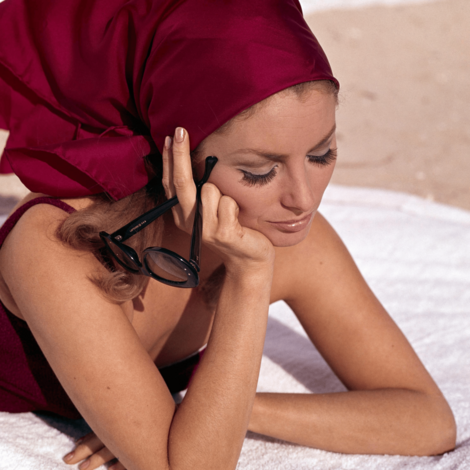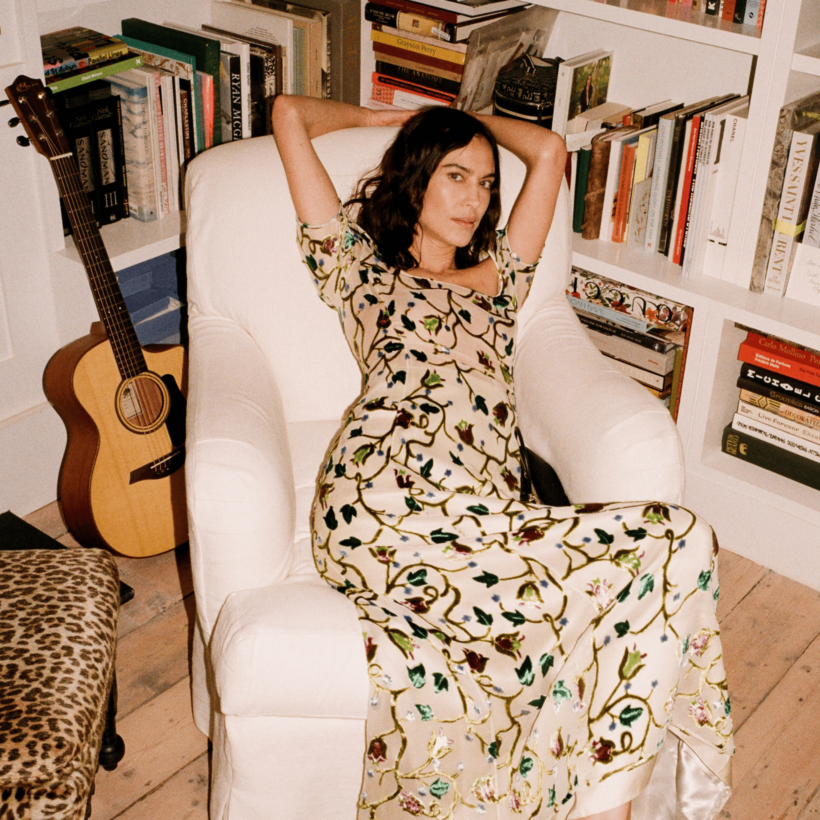Jane Birkin, Edie Sedgwick, Clara Bow, Chloe Sevigny, and, if ChatGPT is to be trusted, Timothée Chalamet have all been called It Girls—a label that confesses an inability to define the possessor’s charismatic, glamorous sense of cool.
Alexa Chung inaugurated her it-ness in school, honed it as a model, refined it as a television presenter, and carried it over the finish line as a designer and photographer. She even wrote a book about the phenomenon in 2013 called, naturally, It, that resembles an analog Instagram feed. At 42, Chung is still tempting the rest of us with her style and brand collaborations (her latest collection for Madewell launches on November 11th), making us long to tromp around the Glastonbury Festival in hot pants, lace shirts, satin slips, Barbour jackets, and Hunter boots just like her.—Linda Wells
When I modeled, the agency wouldn’t put “Chung” on my modeling card because they didn’t want to limit the type of jobs I could do. Being Asian wasn’t a badge of honor back then. I’ve got light colored eyes but dark hair. My dad is Chinese and my mom is English. So the model agents were like, You could be Brazilian, or maybe slightly Mexican.
I’m quite gangly. I like to shroud that gangly frame in relatively sexless clothing. So on top of racial ambiguity, I am quite tomboyish. There’s a lot of overalls and dungarees, vintage denim, and masculine silhouettes. But because I’m contrary, I like to pile flashes of femininity on top. So it might be a pretty blouse or some jewelry, or an unexpected high heel. The play between masculinity and femininity is sort of the intersection in which I live.
I cut my hair into a bob when I was about 12. I can’t remember the original inspiration. Maybe it was Natalie Imbruglia in that video “Torn.” Everyone at school loved my bob. And I remember loving the attention.
When you’ve got a school uniform, the only way you could express your style was through your pencil case, your shoes, or your school bag. That Britney video [“…Baby One More Time”] came out when I was still at school, so we all dressed like Britney, winking like schoolgirl sluts. I had a record bag, a DJ sack, that I borrowed from my brothers. The first year of school, everyone accidentally thought I was cool. That sparked my interest in clothes and how you can manipulate what people feel about you based on your appearance.
I had some pretty dodgy haircuts. At one point, I wanted blonde highlights and ginger hair like Ginger Spice, but I ended up with quite a mumsy hairdo. I grew up in the middle of nowhere, and it didn’t really matter what you had on. I had the freedom to do whatever, and I had brothers who would take the piss out of me all the time for my outfits. I became impervious to criticism.
I was scouted to model when I was 15, and from that point onward, I didn’t have much say in my appearance. It was all about conforming to the ideal at the time.
I’ve always been obsessed with the 1960s and the youthquake of that era. In my early 20s, bandage dresses and that early Kardashian look were very prevalent. But I didn’t love it. I was like, Why didn’t we stop at the 60s? Everyone looked so beautiful. Pattie Boyd or Anita Pallenberg or Jane Birkin—they nailed it. I also wanted the haircut and the attitude of Mick Jagger and George Harrison. That was the mix of people that went into the mixing bowl.
I ended up hosting a music television show in the UK called Pop World. I had this hairdresser, George Northwood, who is now quite famous. But at the time, he was an assistant in a salon, and my agency said, This guy will give you a free haircut. I got an iconic haircut—a bob and a fringe—from George Northwood. He wanted it to look like a wig, like the Lost in Translation party wig.
I like the idea of being in costume. I was doing that cosplay because when you’re young, it’s safe to hide in someone else’s costume.
As I had more money and access to beautiful clothes, my style became more refined. I’d spent years being a commercial mule for other people’s ideas. So when I stopped modeling, I was so grateful and pleased to be my own person.
I got to interview Karl Lagerfeld a couple of times and was invited to watch him in the studio. He was a Halloween fancy-dress costume. He was obviously a massive part of how fashion was evolving, but at the same time, he stuck to the same uniform for himself.
I’m obsessed with airport dressing. It’s the crossover of all the things: Comfort, great people watching. If you want to be upgraded, you want to look relatively smart. Sometimes I wear a full suit, because I like the idea of feeling like I’m in the Stones in the 70s. When I was in my twenties, I was committed to an Anita Pallenberg moment, knee-high boots, hot pants, and a fedora. The Julian Schnabel pajamas and overcoat is a good airport look as well.
I don’t typically use a stylist because I miss real style and a true expression of personality. We’re in an era where everyone’s looking amazing, but that’s because they’ve been meticulously put together. That’s no shade on the stylists because I think they’re doing an amazing job, and everyone looks so cool. But I miss the mistakes; I miss authenticity. Everyone’s a bit scared now to get it wrong because everyone has to promote themselves on those visual platforms. And so it’s making a more homogenized style.
I hated it when I was called an It Girl when I was younger. In England, it meant a posh girl, which I wasn’t. But as I’ve got older, I’m like, wow, what an accolade. In my mind, it means you can’t be defined. So that’s how I came to embrace it.
I told my stepdaughter, the goal is that your looks are the least interesting thing about you. That said, I do think style or how you present yourself is important. I’ve always valued it, mainly because I’ve seen what it’s brought me. I definitely utilize how I look to adapt to different scenarios, whether that was trying to be a bit more seductive or putting on armor to be a bit more frightening. I really respect the power of clothes.
Alexa Chung is a writer and designer




